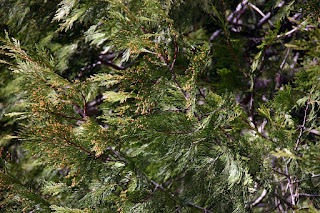Friday, April 1, 2011
septic headaches and woodlot management
 |
| myrtle and blackberry |
| Oregon wild current |
Its been a while. I had to get the septic tank pumped and dig up the main drain line that was plugged possibly with an abundance of lanolin-treated Charmin toilet paper. All is well now and I'm planing on burning all but the grossest t.p. in the future.
My recent exercise regimen includes an hour-a-day of picking up some of the thousands of old drain rocks that clutter the lawn.
After two months of which there was a mere handful of days in which we were not caught in a deluge, a squall, or a steady drizzle, the past three days have been pleasant and dry.
I have five acres here, one of which is cleared for house, gardens, chickens and future pole-barn. The other four are heavily wooded. I've been spending a lot of time in the woods getting familiar with a variety of trees and attempting to formulate a harvest for heat plan.
I have read that five acres can support heating a house in northern climes. I would think that four acres should support a wood stove that is my main heat source- especially considering that five months of the year, May through October, heat is unnecessary in southern Oregon. But, so as not to harvest so much that the integrity of the forest is disrupted, for now, I want to attempt to harvest half to three quarters of of what I need for heat-between 3 and 4 cords.
| Oak clusters |
The root structure of the tan oak survives the fires and suckers sprout following the destruction. From each of the ten giant oaks burned, there are clusters of four to ten trees that share a root structure.
Yesterday I had a logger fall one of the trunks of a cluster of ten. I will have about a cord from it that will cure over the summer.
| pine |
He also bucked up a monster double trunk pine that had split and each trunk had hung up and died in the arms of their spruce neighbors. The pine will result in another two cords of soft wood. Its nice to have about as much hard-wood (oak or madrone) as soft but if I only need to buy one cord of oak this summer, I will be happy.
| next winter's heat source, a cord of oak |
As I take my daily walk through the woods over the next year, I will be attempting to choose a large spruce to sacrifice. It should be one that has a cluster of struggling hemlock and Doug fir surrounding it that will die soon if not given access to more light. The wax myrtle, silk tassel, salal, and huckleberry will thrive in the void while the slower growing evergreens stretch toward the sky.
I planted nantes carrots and shallots today. Steve and Terri caught the first springer for our neighborhood. Chickens laying a dozen eggs-a-day.
| updating the front entrance with new pavers, Irish moss and alyssum. |



